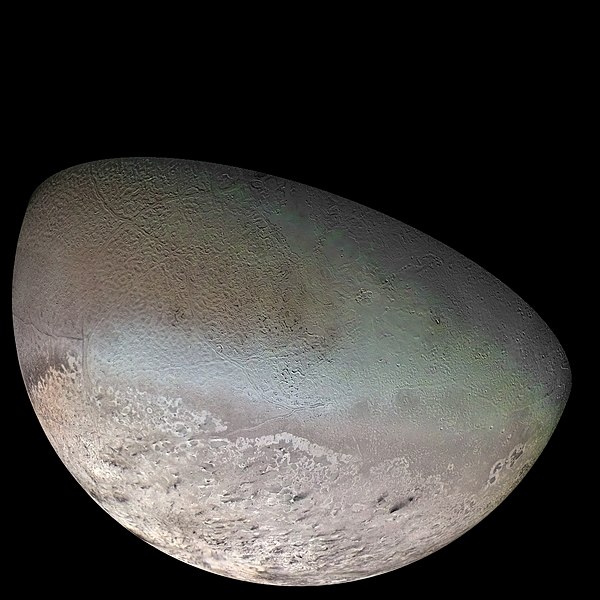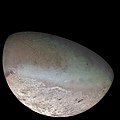File:Triton moon mosaic Voyager 2 (large).jpg
Vai alla navigazione
Vai alla ricerca

Dimensioni di questa anteprima: 600 × 600 pixel. Altre risoluzioni: 240 × 240 pixel | 480 × 480 pixel | 768 × 768 pixel | 1 024 × 1 024 pixel | 2 048 × 2 048 pixel | 4 700 × 4 700 pixel.
File originale (4 700 × 4 700 pixel, dimensione del file: 12,11 MB, tipo MIME: image/jpeg)
Cronologia del file
Fare clic su un gruppo data/ora per vedere il file come si presentava nel momento indicato.
| Data/Ora | Miniatura | Dimensioni | Utente | Commento | |
|---|---|---|---|---|---|
| attuale | 21:40, 10 ott 2011 |  | 4 700 × 4 700 (12,11 MB) | Jbarta | Minimally compressed JPG from TIFF original at NASA. This image has already been colored by NASA. I think we have no business trying to "fix" the coloring. The only alteration made from the NASA original is to enlarge the canvas to enclose the complete sp |
| 23:00, 1 gen 2010 |  | 4 600 × 4 600 (2,81 MB) | Supportstorm | Image Adjustments: Auto levels on contrast and color | |
| 23:59, 18 feb 2008 |  | 4 600 × 4 600 (1,71 MB) | Kaldari | same image, better dimensions | |
| 06:59, 8 apr 2005 |  | 4 500 × 3 500 (1,96 MB) | Bricktop | same image, higher resolution | |
| 19:13, 3 apr 2005 |  | 1 024 × 796 (150 KB) | Smartech~commonswiki | A color mosaic of Triton, Neptune's moon (large). Taken by Voyager 2 in 1989. Color was synthesized by combining high-resolution images taken through orange, violet, and ultraviolet filters; these images were displayed as red, green, and blue images and |
Pagine che usano questo file
Le seguenti 17 pagine usano questo file:
- Atmosfera di Tritone
- Catenae di Tritone
- Crateri di Tritone
- Cronologia della scoperta di pianeti e satelliti del Sistema solare
- Dorsa di Tritone
- Formazione di Plutone
- Fossae di Tritone
- Parametri orbitali di Tritone
- Planitiae di Tritone
- Plutone (astronomia)
- Regiones di Tritone
- Satelliti naturali di Nettuno
- Sulci di Tritone
- Superficie di Tritone
- Tritone (astronomia)
- Utente:Kalibos/sandbox
- Template:Tritone
Utilizzo globale del file
Anche i seguenti wiki usano questo file:
- Usato nelle seguenti pagine di af.wikipedia.org:
- Usato nelle seguenti pagine di an.wikipedia.org:
- Usato nelle seguenti pagine di ar.wikipedia.org:
- Usato nelle seguenti pagine di ary.wikipedia.org:
- Usato nelle seguenti pagine di arz.wikipedia.org:
- Usato nelle seguenti pagine di ast.wikipedia.org:
- Usato nelle seguenti pagine di azb.wikipedia.org:
- Usato nelle seguenti pagine di az.wikipedia.org:
- Usato nelle seguenti pagine di ba.wikipedia.org:
- Usato nelle seguenti pagine di be-tarask.wikipedia.org:
- Usato nelle seguenti pagine di be.wikipedia.org:
- Usato nelle seguenti pagine di bg.wikipedia.org:
- Usato nelle seguenti pagine di bn.wikipedia.org:
- Usato nelle seguenti pagine di bn.wikibooks.org:
- Usato nelle seguenti pagine di bs.wikipedia.org:
- Usato nelle seguenti pagine di ca.wikipedia.org:
Visualizza l'utilizzo globale di questo file.


